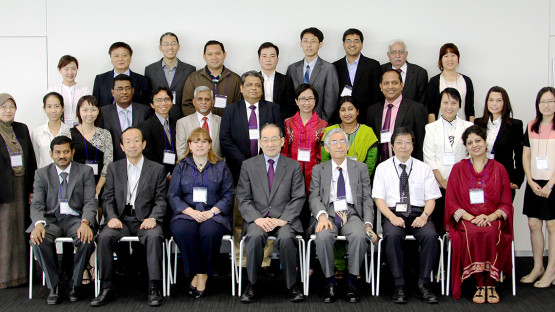For the past four years, the IAEA has worked in collaboration with Japan’s National Institute of Radiological Sciences (NIRS), part of their National Institutes for Quantum and Radiological Science (QST): the success of the relationship has motivated a new agreement, committing to another four years of collaboration (2018-2022).
As with all IAEA Collaborating Centres, the coordinated research efforts are organized around a work plan; the plan being implemented over the next four years is an extension of the agenda for the previous collaboration period. It revolves around applications of quantum technologies to human health, and consists of three general areas: radiation biology, nuclear medicine and diagnostic imaging, and charged particle therapy.
The three work plan areas cover quite a bit of ground.
First, under the radiation biology section of the work plan, NIRS will focus on researching risk estimation in radiotherapy, which is critical for protecting patient safety. Second, in the area of nuclear medicine and diagnostic imaging, they will support molecular imaging techniques for neurodegenerative disorders and cancer, and will provide valuable training and capacity-building functions for other Member States. Third, and in relation to charged particle therapy, NIRS will offer training in clinical practices, medical imaging techniques, and dosimetry, and will provide technical assistance to Member States to improve radiotherapy dosimetry audits.
The wide scope of the collaboration isn’t new: it reflects the past work of NIRS with the IAEA.
“NIRS has already made great contributions, and has been a significant partner”, said May Abdel-Wahab, Director of the IAEA’s Division of Human Health of the Department of Nuclear Sciences and Applications. “That includes their original research, but also their expertise, which has been so valuable in several IAEA Consultants Meetings and training courses”.
At the IAEA headquarters in Vienna, NIRS experts were involved in a Consultants Meeting in 2014 entitled, “Particle Therapy in the 21st Century: Relevance to Developing Countries”. They also participated in a Technical Meeting on the “Radiobiology of Charged Particle Therapy”, and in a Collaborating Centre Commemorative Symposium entitled, “NIRS’ Cooperation with the IAEA on Global Health Issues in the Radiology Field”.
NIRS also committed resources to help train several Member States under two separate topic areas: charged particle therapy and molecular imaging for radiochemists.
In addition to the unique expertise and state-of-the-art training centres that NIRS offers, they also house important equipment, including outstanding ion beam therapy facilities. During the past collaboration, these facilities helped NIRS make several important contributions to research on the effectiveness of ionizing radiation to treat cancerous tumours.
Given the value of our collaboration with NIRS over the past four years, we’re really looking forward to making continued progress with them over this new designation period. The areas covered by the work plan are so important.


